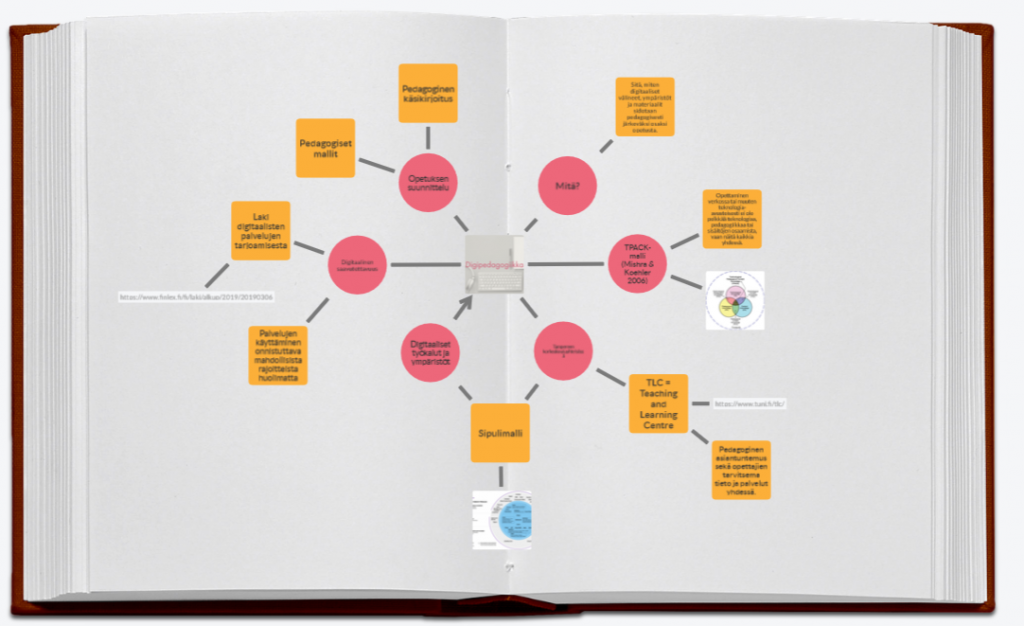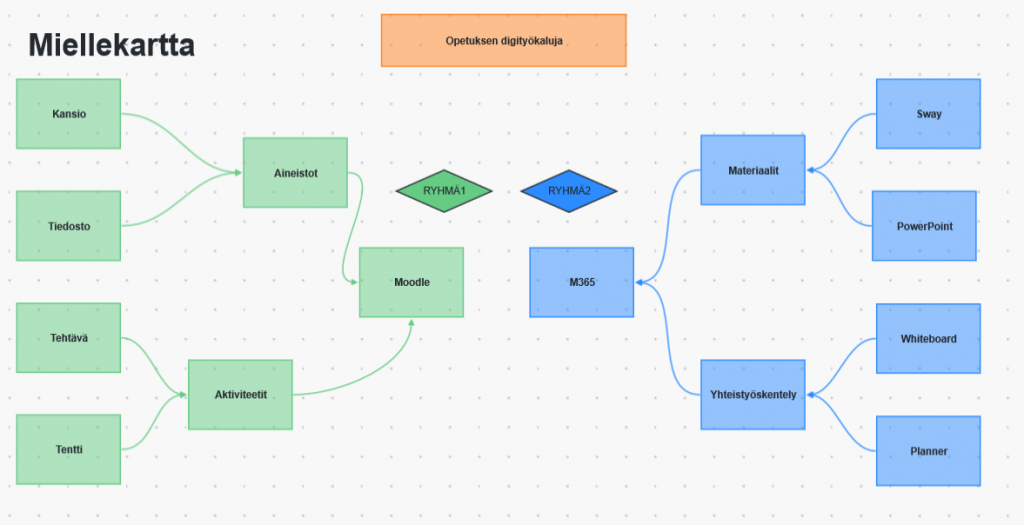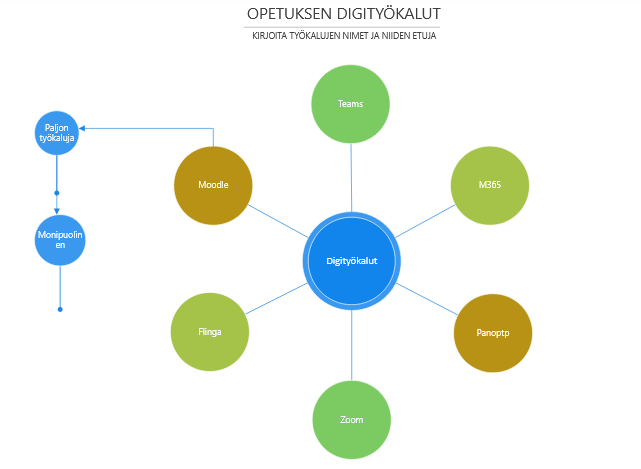A concept map is a visual way of illustrating the relationships between different concepts. The concept map uses words to link concepts and arrows to indicate relationships. A mind map is a free-form map that discribes connections between things. A mind map often has only one concept in the centre and is often depicted as a tree, whereas a concept map is a network-like structure of several concepts. Both can be used for brainstorming, for structuring complex issues and making connections, and for forming an overall picture of something. A concept map and a mind map can illustrate a research topic or the subject of study or group work. Both can be constructed alone or together and with a variety of tools, which are presented in this tip. The concept and mind map tool options are presented according to the use case: ‘Working with others (including users outside the organisation)’, ‘Working with others (users inside the organisation)’ and ‘Working independently’
Working with others (including users outside the organisation)
1. Flinga is a whiteboard tool that you can use via a web browser to add objects and the lines or arrows that connect them. Collaboration is easy in Flinga, as participants do not need to log in to the service, they just need to know the web address of the whiteboard. The creator of the table can limit the participation, for example by locking some of the elements from editing. You can find lots of tips on how to use Flinga in the Digital toolkit
- https://edu.flinga.fi/
- Software catalog: Flinga
- Instructions: IT instructions, Digital Toolkit

2. The whiteboard tools for Teams and Zoom meetings also allow you to work with people from outside your organisation when they are present in the meeting. However, they cannot edit the whiteboard after the meeting.
Working with others (users inside the organisation)
1. The M365 Whiteboard is a useful tool for creating mind maps and visualising issues. In addition to the predefined templates, maps can be built by combining different elements. Like other M365 documents, the Whiteboard can be shared for others to work on. Access requires a login with TUNI. The Whiteboard tool can also be found inside a Teams meeting, where it is automatically accessible to all meeting participants (including those outside the organisation, but only for the duration of the meeting).
- https://office.com/apps
- Software catalog: M365
- Instructions: Digital toolkit

2. Zoom is familiar as a video meeting environment, but it also includes a standalone whiteboard tool that works outside of meetings. The extensive template library also provides a basis for creating a mind map. To edit Zoom Whiteboard, you need to log in with your Tuni ID.
- https://tuni.fi/zoom
- Software catalog: Zoom
- Instructions: IT instruction ,Digital Toolkit

3. M365 Office (PowerPoint, Visio): Files saved on OneDrive can be shared for everyone to edit. You can select the people concerned or share a link to access the document.
In PowerPoint, you can find mind-mapping charts in SmartArt graphics objects. Visio offers even more possibilities and tools for creating maps.
- https://office.com/apps
- Software catalog: M365
- Instructions: IT instructions, Digital Toolkit

Working independently
Of course, you can use all the tools mentioned above to build a concept or mind map independently.
1. CmapTools is a concept map tool, which can be installed on your computer. CmapTools is suitable for building large concept maps, e.g. to describe a phenomenon in a research or thesis. You can download CmapTools from the Software center.

- Ohjelmistolista: CmapTools
Before choosing tools, you should consider
- Are you building a concept or mind map with others or alone?
- If you are building a map with others, does everyone have a TUNI?
- If you are building the map with others, who will create the map base and therefore take care of sharing the map with others?
- If the map is a learning task, how will the map be returned for assessment? (As a screenshot, distributed to the teacher at the end, owned and shared by the teacher)
